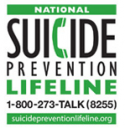Online Safety
**CYBERSAFETY FACT SHEET**
–There are an estimated 77 million kids online today.
–There are more than 40,000 chat rooms where children can meet child predators.
–Pedophiles lure kids in, establish relationships with them online, then arrange to meet face-to-face.
–75% of children are willing to share personal information online.
–Chat rooms and instant/private messages are two main tools pedophiles use to contact children online.
–Online child porn/sex exploitation is the most significant crime problem confronting the FBI.
–There is a 100% chance of a child meeting a predator in a chat room.
Children are reported missing to the FBI at the rate of:
• 825,600 kids per year
• 68,800 kids per month
• 16,100 kids per week
• 2,300 kids per day
• 96 kids per hour
• 3 kids every 2 minutes
The Ultimate Parent’s Guide to Internet Safety
CYBER-BULLYING & HARASSMENT
Cyberbullying is bullying that takes place using electronic technology. Electronic technology includes devices and equipment such as cell phones, computers, and tablets as well as communication tools including social media sites, text messages, chat, and websites. Examples of cyberbullying include mean text messages or emails, rumors sent by email or posted on social networking sites, and embarrassing pictures, videos, websites, or fake profiles.
What is Cyberbullying?
Cyberbullying is when a child, preteen or teen is tormented, threatened, harassed, humiliated, embarrassed or otherwise targeted by another child, preteen or teen using the Internet, interactive and digital technologies or mobile phones. It has to have a minor on both sides, or at least have been instigated by a minor against another minor. Once adults become involved, it is plain and simple cyberharassment or cyberstalking. Adult cyberharassment or cyberstalking is NEVER called cyberbullying.
Direct cyber bullying includes all of cyber stalking’s modes, and then some: (from Officer.com)
- Instant or text messaging harassment. Bullies use these tools the same way they’d use e-mail – to threaten or say hurtful things.
- Password stealing. With the victim’s password, a bully can impersonate the victim, change profile information to include personal or inflammatory language, or use the password to hack the victim’s account.
- Blogs and Web sites. Blogs are free online diaries. They can stand alone or be linked to a Web site. In both cases, a bully might post disparaging information about a victim, or start a blog or site impersonating the victim.
- Digital pictures. Teens may use their phones to take pictures of other teens in the locker room or shower, then e-mail the pictures to friends or even post them online.
- Internet polling. Bullies participate in insulting or degrading polls about a classmate’s physical characteristics or sexual experience.
Another form, cyber bullying by proxy, is more troublesome than direct cyber bullying, because bullies involve people who don’t know what they are getting into. In most cases, cyber bullying by proxy makes it look as if the victim has started trouble, most often when a bully impersonates the victim. The victim’s friends may become angry and shun him; the victim’s parents may punish him; or a bully may even notify the ISP that the victim is a bully, so the ISP takes action against the victim.
One of the most dangerous forms of cyber bullying by proxy involves the bully either pretending to be the victim, or posting the victim’s personal information, in chatrooms and bulletin boards that pedophiles or hate groups frequent. Advertising the victim for sex, or portraying the victim as a racist, can put the victim in significant physical danger.
Who are the bullies?
StopCyberBullying.org identifies four main types of bullies. These bullies are not like “traditional” playground bullies. Moreover, no one group or “type” is more at risk than another to become either a bully or a victim.
- “Vengeful angels” typically cyber bully teens who have been bullying them or their friends.
- “Revenge of the nerds” cyber bullies are similar to vengeful angels, though they bully more to have power over others with whom they normally have no power. Unlike vengeful angels, they need others to know what they’re up to.
- “Mean girls” get together in a group to cyber bully, often for entertainment. Attention feeds their egos (and thus their behavior).
- “Inadvertent” cyber bullies either don’t know they are doing wrong when they respond to an upsetting message or intend to be “playful” and don’t understand that others could take it seriously.
—————————————————————————————————
Online predators: Help minimize the risk
Using Internet communication tools such as social networking, chat rooms, email, and instant messaging can put children at potential risk of encountering online predators. The anonymity of the Internet means that trust and intimacy can develop quickly online. Predators take advantage of this anonymity to build online relationships with inexperienced young people. Kids feel they are aware of the dangers of predators, but in reality, they are quite naive about online relationships. Parents can help protect their kids by knowing the risks related to online communication and being involved in their kids’ Internet activities.
How do online predators work?
Online predators do the following:
- Find kids through social networking, blogs, chat rooms, instant messaging, email, discussion boards, and other websites.
- Seduce their targets through attention, affection, kindness, and even gifts.
- Know the latest music and hobbies likely to interest kids.
- Listen to and sympathize with kids’ problems.
- Try to ease young people’s inhibitions by gradually introducing sexual content into their conversations or by showing them sexually explicit material.
- Might also evaluate the kids they meet online for future face-to-face contact.
How can parents minimize the risk of a child becoming a victim?
- Talk to your kids about sexual predators and potential online dangers.
- Use parental control software that’s built into new operating systems like Windows 7 or Windows Vista or that you can download for free like Windows Live Family Safety Settings.
- Follow age limits on social networking websites. Most social networking sites require that users be age 13 and over. If your children are under the recommended age for these sites, do not let them use them.
- Young children should not use chat rooms—the dangers are too great. As children get older, direct them towards well-monitored kids’ chat rooms. Encourage even your teens to use monitored chat rooms.
- If your children take part in chat rooms, make sure you know which ones they visit and with whom they talk. Monitor the chat areas yourself to see what kind of conversations take place.
- Instruct your children to never leave the chat room’s public area. Many chat rooms offer private areas where users can have one-on-one chats with other users-chat monitors can’t read these conversations. These are often referred to as “whisper” areas.
- Keep the Internet-connected computer in a common area of the house, never in a child’s bedroom. It is much more difficult for a predator to establish a relationship with your child if the computer screen is easily visible. Even when the computer is in a public area of your home, sit with your child when they are online.
- When your children are young, they should share the family email address rather than have their own email accounts. As they get older, you can ask your Internet Service Provider (ISP) to set up a separate email address, but your children’s mail can still reside in your account.
- Tell your children to never respond to instant messaging or emails from strangers. If your children use computers in places outside your supervision-public library, school, or friends’ homes-find out what computer safeguards are used.
- If all precautions fail and your kids do meet an online predator, don’t blame them. The offender always bears full responsibility. Take decisive action to stop your child from any further contact with this person.
How can your kids reduce the risk of being victimized?
There are a number of precautions that kids can take, including:
- Never downloading images from an unknown source-they could be sexually explicit.
- Using email filters.
- Telling an adult immediately if anything that happens online makes them feel uncomfortable or frightened.
- Choosing a gender-neutral screen name that doesn’t contain sexually suggestive words or reveal personal information.
- Never revealing personal information about themselves (including age and gender) or information about their family to anyone online and not filling out online personal profiles. For more specific rules about personal information on sites like Windows Live Spaces or MySpace, see How to help your kids use social websites more safely.
- Stopping any email communication, instant messaging conversations, or chats if anyone starts to ask questions that are too personal or sexually suggestive.
- Posting the family online agreement near the computer to remind them to protect their privacy on the Internet.
What can you do if your child is being targeted?
- If your child receives sexually explicit photos from an online correspondent, or if she or he is solicited sexually in email, instant messaging, or some other way online, contact your local police. Save any documentation including email addresses, website addresses, and chat logs to share with the police.
- Check your computer for pornographic files or any type of sexual communication—these are often warning signs.
- Monitor your child’s access to all live electronic communications, such as chat rooms, instant messaging, and email.
Source: Some of the above information was adapted, with permission, from the U.S. Federal Bureau of Investigation publication A Parent’s Guide to Internet Safety.
————————————————————————————————————–
ONLINE PREDATORS |
|
| Sexual predators do exist and are a very real threat. They target both boys and girls of all ages and use the anonymity of the Internet to their advantage since they can be whomever they want. Many are master manipulators with skills that can cripple any child’s sense of awareness. This is known as the grooming process and predators look for children that are more technically savvy than their parents. They look for children that are emotionally vulnerable which can be related to personal issues derived from problems at school or home. They use these issues to befriend the victim and empathize with them while building a pseudo friendship and trust. If a child indicates frustration with parents or teachers at school the predator might suggest the child’s parents are way too strict or their teacher is being unfair and this plays right into the adolescent mind as they look for people to verify their feelings.With the presence of searchable user profiles when dealing with Instant Messaging and Chat Rooms as well as Social Networking profiles, predators can easily find information about potential victims since many naive children list personal information with no regard for safety. Even simple statements listed on a profile such as school attended, sport played, or even what jersey number worn can allow predators to target them. A 16 year old girl who innocently posts a picture of her new car in front of her house for her friends to see is also providing information for potential predators such as what her car looks like, her license plate number, house address, what her house looks like etc.Once a predator Instant Messages or Chats with a victim and gains their trust they often send pornographic pictures via the IM session or e-mail and sometimes gifts through the mail. They might even have a toll free phone number for the victim to call or mail a cell phone so it will not show up on their parent’s phone bill. If the victim tries to cut off communication, predators will often convince them that they will tell their parents what they have been doing online and that they have viewed pornographic pictures, etc. and scare the victim into continuing the relationship.The Internet is a worldwide network that stretches far beyond the grasp of the US judicial system. Technology moves so fast the slow progression of our law making process will never fully address the problem. Therefore, parents must be on guard to protect their families. There are many organizations and government agencies designed to assist parents with issues such as these. Internet searching for information will also provide many links and web sites to help.Predator Grooming • Chat Rooms (based on interest) • Look for child oriented screen names • Search through SN profiles • Strike up a conversation • Show interest and gain their trust • Build them up (be their friend)Predator Warning Signs • Spends a lot of time online • Find porn on the computer • Receive phone calls, mail, gifts from people you do not know • Withdraws from normal activity • Switches screen quickly (Alt+Tab) • Uses other accounts for e-mail or Instant MessagingSome Helpful Web Sites for More Information: http://www.fbi.gov/publications/pguide/pguidee.htm http://www.ic3.gov http://www.missingkids.com http://www.netsmartz.org http://www.staysafe.org http://www.isafe.org/ |
Parents Guide to Protecting Kids Online
If you’re like me, and you use your kids as free tech support whenever you need to configure your wireless router or your TV to play funny cat videos, then it’s probably tempting to let the kids take care of their own online security, as well.
That could be a big mistake.
While your kids might be experts at the technology, they’re not experts at evaluating risk.
You already know that, without guidance, children can be easily manipulated into smoking, drinking, speeding, bullying, and, of course, jumping off of cliffs because all their friends are doing it.
Mistakes can cause a lot of damage — everything from expensive ransom-ware infections, identity theft, loss of friendships to even putting your child’s life at risk.
Just as in the off-line world, you need to provide guidance, set boundaries, and, depending on your child’s age and maturity level, implement some safeguards.
You also need to be aware of where the threats are coming from.
FOR MORE INFO VISIT:
20 WAYS TO PROTECT YOUR KIDS ONLINE
Talk with your children:
- Teach your children not to respond to messages from strangers
- Educate your children about the risks of “sexting”
- Warn your kids about file sharing
- Warn your kids about online polls and surveys
- Talk your children about cyberbullying
- Set a good example
- Set limits on how much time your children can spend online
More on Guides




















![Validate my RSS feed [Valid RSS]](http://dreamcatchersforabusedchildren.com/wp-content/uploads/2009/10/valid-rss.png)












